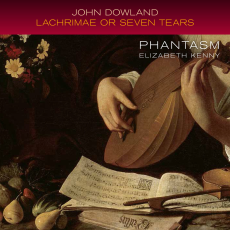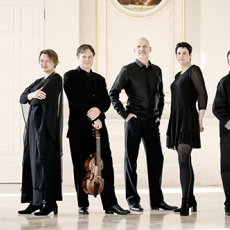Phantasm - Dowland: Lachrimae - American Record Guide
The recording from lutenist Elizabeth Kenny and the viol consort Phantasm gives the entire contents of Dowland’s 1604 publication Lachrymae. Its music is for a consort of five viols (or violins) with lute. The lute parts may sound superficially like continuo realization, but they are fully written out in tablature, and they contain a fair amount of material independent of the strings. The collection opens with seven “passionate pavans” whose titles refer to different sorts of tears. Each begins with the stepwise melodic descent of a perfect fourth that is easily Dowland’s best-known musical idea. There are surreptitious allusions to music by other composers, including Lassus and Marenzio, that are likely to escape most modern listeners but not the players of the time. Like the Books of Songs, Lachrimae is printed so as to be read by players seated around a table. Following the 7 pavans are 14 additional dances, each bearing the name of a person, including the composer himself (‘Semper Dowland, Semper Dolens’). A few years ago I reviewed a recording by Laurence Dreyfus and Phantasm with organist Daniel Hyde of Consorts to the Organ by William Lawes (Linn 399; Nov/Dec 2012). I was bowled over by what was possibly the finest viol consort playing I had ever heard. The present recording upholds that dazzling standard. There is always a keen sense of phrase trajectory; nothing is ever static. This is achieved not by anachronistic dynamic shadings, but from the players clearly knowing where the phrases are going, playing them accordingly, and interacting with one another as of one mind. The tone is luscious and warm, not the thin and wiry sound that some viol players produce. It appears that this recording was occasioned by the acquisition in 2015 by the library of Magdalen College, Oxford, of a rare original print of the publication. The original owner of the copy was Sir Charles Somerset, who matriculated at Magdalen in 1602. In a sense, the copy has returned home. The booklet includes some fine photographs of the binder’s cover (stamped “C.S.”), the title page, the table of contents, and several pages of music.


